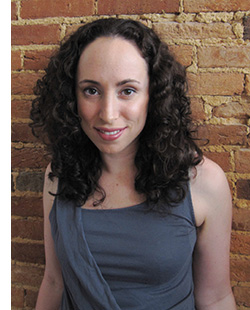
When I finished my Ph.D. in biochemistry at the University of Maryland in 2011, I graduated into one of the toughest biotech job markets in history. I applied for over 200 traditional positions within academia and industry, with no luck. As my search stalled, I turned to a pet interest I had had in low-intensity ultrasound and built a business plan around using it as a novel melanoma treatment.
I didn’t realize it right away, but my startup took me into the world of independent science, where the goal is doing your work on your terms—right now. While the science job market is tighter than ever, lab spaces are actually becoming more affordable, particularly if you are willing to work in a communal setting. From how it’s funded to the workplaces associated with it, independent science deviates from conventional expectations of scientific research. My nontraditional startup, Sonify Biosciences, LLC, is one of many that exist outside the confines of academia, big industry and government jobs.
Who’s involved?
The people who consider themselves independent scientists range from hobbyists without college degrees to those with postdoctoral or even professorial experience. The network is larger than just the individuals or small groups who spearhead them. For instance, my specialty lies in biochemical wet-lab work, so I contract out the engineering and physics to people whose skills and knowledge exceed mine. They’re not technically employees, but they’re vital to Sonify’s success.
How do you fund this?
The quick answer is any way you can. The long answer is that, because the endgame is getting to do your own work, independent scientists can be funded by one or more of the following: private investment, grants, Small Business Innovation Research money, crowdsourcing, loans, angel investment, or even their own savings. Each has pros and cons. For me, my first success was winning the Recent Alum and Best Biotech categories of the University of Maryland 2012 business plan competition. The bottom line is that you have to understand your individual situation. There’s no right way to do this, but that means there’s no wrong way either.
Where do you work?
I refer to Sonify Biosciences as a “gypsy” startup because I don’t have permanent lab space. I’m renting space in a shared services lab in a local teaching hospital. By contrast, building a biological research facility from scratch would run hundreds of thousands of dollars. Keeping overhead low enabled me to start at what’s referred to as stage zero—the point where you’re doing proof-of-concept research without an intellectual property portfolio (meaning you hold no patents). It’s nearly impossible to get stage zero investment, because there’s nothing in it for the investor. However, by keeping my total costs below even the value of most grants, I made the gamble worthwhile to my investors.
Shared workspaces already exist in many cities. These so-called high-tech “hackerspaces” are becoming more common, with even large industrial entities investing in the promise of the independent research model. For example, Janssen Labs set up a shared biological research facility on Johnson & Johnson’s R&D campus in La Jolla, and one is opening in Boston as well. Johns Hopkins University in Baltimore is developing a shared space for independent engineering efforts. Even if you don’t live in a startup hub, you can still find workspace if you get creative.
Should I get involved?
You have to know yourself. I enjoy the unstructured approach, and being able to work on my own ideas before I’m 30 took precedence over working towards a guaranteed lifelong job. Ultimately, you must figure out the right vehicle to do work that generates value, however you define it. For me, it’s a nontraditional startup. For you, it might be something completely different. You can start by figuring out what ideas and possibilities excite you, both as a person and a scientist.
Miriam Boer (mboer@sonifybio.com) is the founder and CTO of Sonify Biosciences LLC in Baltimore, Md., U.S.A. She tweets @mademoiselleMim and blogs at http://independentscience.tumblr.com/.
